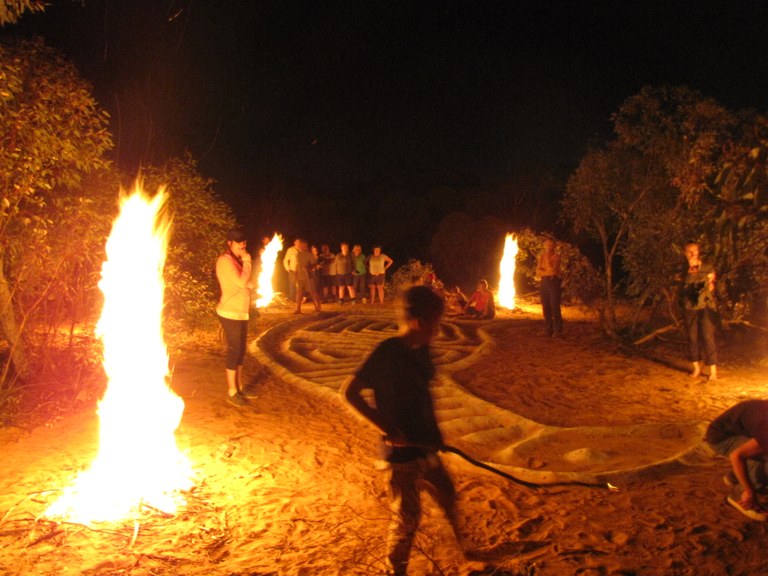
Malleefowl @ Rick Farley Reserv
K2C and Friends of Grasslands visit to Rick Farley Reserve, 5 to 9 April - Geoff Robertson
About 30 people visited Rick Farley Reserve (RFR), near Lake Mungo National Park, for malleefowl learning. The roads leading to and on the reserve were good although sometimes steep and sand covered, making a four wheel drive vehicle essential.
Current methods of engaging Aboriginal youth in biodiversity were restricted to planting and weeding, but these projects do not teach culture. The malleefowl learning project was conceived as bringing Aboriginal culture and traditional land management practices together with biodiversity conservation. The camp at RFR is extremely well set up and comfortable. The vegetation at the reserve is largely mallee; a big fire several years ago had burnt a wide strip through the reserve.
On Saturday we drove to a number of sites around the reserve, including several now unused malleefowl mounds in the mallee country, an ancient lake bed, and a ridge where we could see the landscape stretch out before us, a remnant pine woodland. We had a hunt for dragons and skinks. Malleefowl monitoring is an important activity at the reserve and the behaviour of malleefowl, the monitoring program and steps being taken to reduce predation were explained to us. At the ancient lake bed we visited, evidence of thousands of years of Aboriginal occupation was clear. Along the shores of the lake bed were ancient camping grounds.
The highlight of the weekend was the malleefowl learning session on Saturday evening. It began by rebuilding the malleefowl sculpture in the sand. The sculpture is moulded from raised sand in the traditional design of a mallee fowl. The ridges of the sand were covered in white ochre powder. When it was dark about eight fires were lit around the malleefowl sculpture. Around the malleefowl sculpture, our host Mick Kelly explained the symbolism and importance of the malleefowl and related it to its place in broader Aboriginal culture, while asking many questions of his audience. Mick explained how the different parts of the malleefowl represent both life journeys and roles in society. His explanation was both insightful and challenging. The young and old were likely deeply impressed with the experience.
A longer article on this appears in the recent News of Friends of Grasslands.




